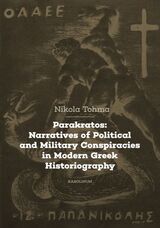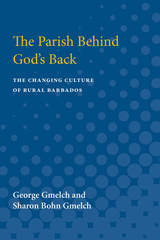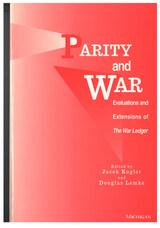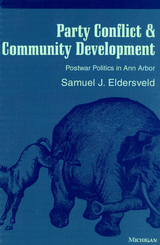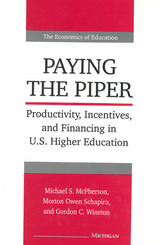5 books about Tides
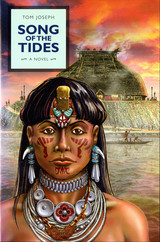
Song of Tides
Tom Joseph
University of Alabama Press, 2008
Beginning with their battle against the forces of Ponce de Leon, the Calusa Indians of southwest Florida entered a dark period of European invasion and native resistance, which changed the nature and course of life on the North American continent.
Song of the Tides is a work of anthropological fiction that is set during the period of the Spanish entrada into southwest Florida and their encounters with the Calusa. Relying on letters and memoirs, especially those of explorer Pedro Menendez de Aviles, shipwrecked captive Escalante Fontaneda, and the Jesuit priest Juan Rogel, Joseph has woven a tale of vivid historical detail and compelling human drama. Working with Calusa scholars, the author has created a superbly written account of the clash of two proud and dominant cultures. Told through the voice of Aesha, daughter of the great Calusa chief Caalus, as well as those of other political and spiritual leaders, the fictional narrative spans half a century of conflict with Spanish soldiers and Jesuits, infighting between bands, struggle to preserve their culture, and eventual defeat of the Spanish through wit and deceit.
[more]

Telescopes, Tides, and Tactics
A Galilean Dialogue about The Starry Messenger and Systems of the World
Stillman Drake
University of Chicago Press, 1983
Publication of Galileo's Starry Messenger in 1610, detailing startling observations with the newly invented telescope, sparked immediate furor among the astronomers and philosophers of the day. The discovery of the "Medicean stars" (the satellites of Jupiter) was pronounced a hoax, an optical illusion, a logical and theological impossibility. Stillman Drake, one of the world's foremost Galileo scholars, recreates in Telescopes, Tides, and Tactics the fascinating aftermath of the publication of the Starry Messenger. Drawing on Galileo's scientific working papers and the letters and notebooks of his colleagues, Drake presents an imaginative Galilean dialogue using the text of the Starry Messenger as a departure point for discussions of appropriate scientific method, new discoveries, and the emergence of a new world view at this early stage of the Scientific Revolution.
Drake has revised his earlier abridged translation of the Starry Messenger, and for the first time the entire work is presented here in modern English. No other edition or translation of this famous work has analyzed Galileo's recorded observations in detail, compared them with modern calculations, or explained the later use he made of them. In the accompanying fictional dialogue, Salviati, Sagredo, and Sarpi reread the Starry Messenger in 1613 and discuss events and issues raised in the three years since its publication. Much of the dialogue is based on archival materials not previously cited in English. Drake has unearthed a wealth of information that will interest the lay reader as well as the historian and the scientist—descriptions of the various and occasionally bizarre critics of Galileo, a reconstruction of Galileo's promised book on the system of the world, his tables of observations and calculations of satellite motions, and evidence for an early tide theory. It was this theory explaining tides by motions of the earth, rather than the influence of Platonic metaphysics, Drake argues that played a major role in Galileo's acceptance of Copernican astronomy.
Telescopes, Tides, and Tactics is a thorough portrait of Galileo as a working astronomer. Offering much more than a commentary on the Starry Messenger, Drake has written a novel and absorbing contribution to the history of physics and astronomy and the study of the Scientific Revolution.
Drake has revised his earlier abridged translation of the Starry Messenger, and for the first time the entire work is presented here in modern English. No other edition or translation of this famous work has analyzed Galileo's recorded observations in detail, compared them with modern calculations, or explained the later use he made of them. In the accompanying fictional dialogue, Salviati, Sagredo, and Sarpi reread the Starry Messenger in 1613 and discuss events and issues raised in the three years since its publication. Much of the dialogue is based on archival materials not previously cited in English. Drake has unearthed a wealth of information that will interest the lay reader as well as the historian and the scientist—descriptions of the various and occasionally bizarre critics of Galileo, a reconstruction of Galileo's promised book on the system of the world, his tables of observations and calculations of satellite motions, and evidence for an early tide theory. It was this theory explaining tides by motions of the earth, rather than the influence of Platonic metaphysics, Drake argues that played a major role in Galileo's acceptance of Copernican astronomy.
Telescopes, Tides, and Tactics is a thorough portrait of Galileo as a working astronomer. Offering much more than a commentary on the Starry Messenger, Drake has written a novel and absorbing contribution to the history of physics and astronomy and the study of the Scientific Revolution.
[more]

Tides and Floods
New Research on London and the Tidal Thames from the Middle Ages to the Twentieth Century
James Galloway
University of London Press, 2010
The lands bordering the tidal river Thames and the Thames Estuary have historically been highly vulnerable to marine flooding. The most severe of these floods derive from North Sea storm surges, when wind and tide combine to drive huge quantities of water against the coast, as happened to devastating effect in 1953. This project seeks to understand the occurrence of storm flooding in the past, and to explore the ways in which people have responded to the threat. The project draws upon rich surviving documentary sources to study the impact of storm flooding upon the reclaimed marshlands bordering the tidal Thames and its estuary during the period c.1250-1550. Year-by-year accounts of the management of riverside properties have been examined and the degree to which reclaimed land was lost to the sea during the later Middle Ages assessed. The impact of population decline and agrarian recession upon the economics of coastal and river-side defence has been considered. The flood threat to medieval London’s low-lying suburbs has been investigated and the possibility that the long-term flooding of lands down-river spared the city the worst effects of North Sea storm surges explored. Parallels have also been sought in the modern policy of managed retreat or realignment. The volume concludes with an overview of the multi-faceted work of the Thames Discovery Programme, which is increasing our knowledge of many aspects of the Thames’s past, from medieval fish traps, through nineteenth-century shipbuilding, to the Blitz, which posed a new and very real flood threat to the mid-twentieth century metropolis.
[more]
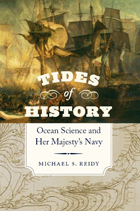
Tides of History
Ocean Science and Her Majesty's Navy
Michael S. Reidy
University of Chicago Press, 2008
In the first half of the nineteenth century, the British sought to master the physical properties of the oceans; in the second half, they lorded over large portions of the oceans’ outer rim. The dominance of Her Majesty’s navy was due in no small part to collaboration between the British Admiralty, the maritime community, and the scientific elite. Together, they transformed the vast emptiness of the ocean into an ordered and bounded grid. In the process, the modern scientist emerged. Science itself expanded from a limited and local undertaking receiving parsimonious state support to worldwide and relatively well financed research involving a hierarchy of practitioners.
Analyzing the economic, political, social, and scientific changes on which the British sailed to power, Tides of History shows how the British Admiralty collaborated closely not only with scholars, such as William Whewell, but also with the maritime community —sailors, local tide table makers, dockyard officials, and harbormasters—in order to systematize knowledge of the world’s oceans, coasts, ports, and estuaries. As Michael S. Reidy points out, Britain’s security and prosperity as a maritime nation depended on its ability to maneuver through the oceans and dominate coasts and channels. The practice of science and the rise of the scientist became inextricably linked to the process of European expansion.
Analyzing the economic, political, social, and scientific changes on which the British sailed to power, Tides of History shows how the British Admiralty collaborated closely not only with scholars, such as William Whewell, but also with the maritime community —sailors, local tide table makers, dockyard officials, and harbormasters—in order to systematize knowledge of the world’s oceans, coasts, ports, and estuaries. As Michael S. Reidy points out, Britain’s security and prosperity as a maritime nation depended on its ability to maneuver through the oceans and dominate coasts and channels. The practice of science and the rise of the scientist became inextricably linked to the process of European expansion.
[more]

Tides Of War
World News Reporting 1931-1945
Robert W. Desmond
University of Iowa Press, 1984
READERS
Browse our collection.
PUBLISHERS
See BiblioVault's publisher services.
STUDENT SERVICES
Files for college accessibility offices.
UChicago Accessibility Resources
home | accessibility | search | about | contact us
BiblioVault ® 2001 - 2025
The University of Chicago Press


